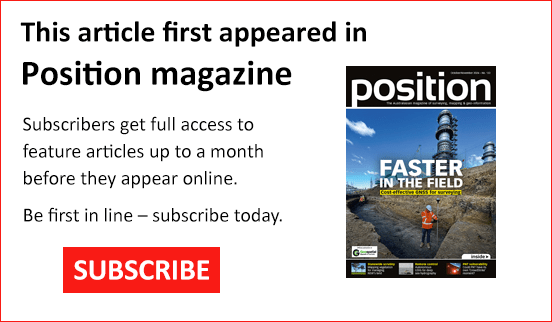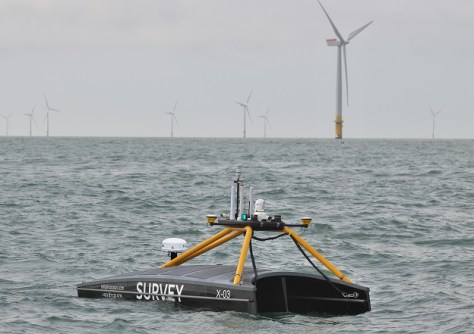
Ireland-headquartered XOCEAN is expanding its operations around the world, including here in Australia.
Hydrographic surveying is big business. With offshore wind farms and other at-sea facilities popping up all over the globe, there has never been a greater need for seafloor mapping and surveillance.
Traditionally, hydrographic surveying has been accomplished using crewed vessels. But more and more lately, the task is being turned over to uncrewed vessels, with all the advantages they bring — no need for crew quarters and on-board support facilities, greater safety, smaller size, lower purchase and operating costs… the list goes on.
One company that jumped on the bandwagon early and now operates around the world, is Ireland-based XOCEAN. Founded in 2017, its operations rely on a fleet of uncrewed surface vessels (USVs) that harvest high-resolution data while being remotely controlled via satellite. Each USV weighs just 750 kg and has dimensions of just 4.5 m x 2.2m. The company says that, due to the USVs’ small size and light weight, their carbon footprint is 1,000 times less than conventional vessels. They also produce lower levels of noise, thereby lessening their effect on the environment.
XOCEAN has scaled quickly and now operates in 22 jurisdictions across Europe, North America and the Asia-Pacific. It recently secured a €30 million investment and lately has established a state-of-the-art technical and manufacturing centre here in Australia.
“We continue to experience rapid growth, driven largely by the major expansion of the international offshore wind market and the need for clean, renewable energy globally,” said Kevin Harnett, XOCEAN’s Chief Revenue Officer. “Over the past year we have grown our USV fleet to 30 and doubled our headcount to 250, and we plan to double this again within two years.”
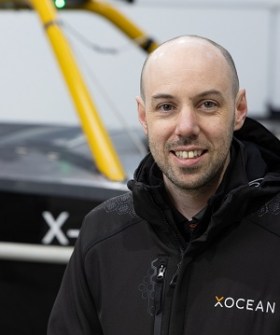
According to Harnett, XOCEAN has harvested more than 4 million gigabytes of data and supported the development of more than 45 gigawatts of new offshore wind capacity.
The company aims to operate the world’s largest fleet of survey class USVs. Its current USV is an uncrewed ‘over the horizon’ vessel that sends real-time images and situational awareness data to XOCEAN’s team of qualified USV pilots and surveyors. Equipment carried includes multibeam echosounders, sub-bottom profilers, side-scan sonar and magnetometers. A typical mission lasts 10 days offshore.
In Australia, XOCEAN has its eyes on current and upcoming offshore windfarm projects, as well as what might be called ‘standard’ hydrographic work through the HydroScheme Industry Partnership Program (HIPP). The company was added to the HIPP’s panel of approved industry providers earlier this year.
“We completed our first Australian survey in 2023 with a non-invasive geophysical survey in Waratah Bay and have since opened our state-of-the-art technical hub in Melbourne,” said Harnett.

Being an operator of remotely controlled vessels means that XOCEAN’s staff can be located anywhere in the world, including Australia. “Our global operations utilise a work force based in different geographic locations and time zones,” said Harnett. “This has reduced the need for night shifts and irregular working hours, creating a more balanced lifestyle for ‘traditional’ seafarers.”
And the company is looking to employ more Australians in the coming months.
“We are seeking passionate professionals for various roles, including hydrographic data processors, surveyors and marine pilots,” said Harnett. “Due to the nature of our remote systems, the workforce in Australia is deployed on global projects — giving professionals an opportunity to use their skillset in a broad range of environments.”
Safety is another big factor. By eliminating the need for large crews to spend weeks at sea, the remotely controlled USVs do not put crew members at risk of any harm.
The operation also opens opportunities for greater gender diversity in the maritime sector, says Harnett. “We are committed to creating a barrier-free work environment for women in maritime and currently operate at 31 times the industry average for female seafarers.”
Harnett says XOCEAN is eager to both share its expertise and gain valuable insights from the Australian geospatial community as it expands its operations here. “Engaging with local professionals and organisations will allow us to contribute meaningfully to the industry while also learning from the unique perspectives and innovations that Australia has to offer,” he said.
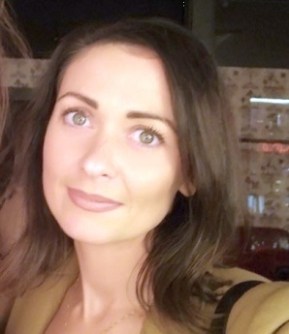
Donna O’Sullivan, UK-based USV Pilot
What is your background?
I began my career working for BP shipping, having completed my cadetship aboard their oil and gas tankers. I then moved to a bunker barge in Gibraltar for around four years before spending most of my career aboard ferries from Dover to Dunkirk, and eventually for P&O ferries out of Ireland.
How did you find out about the job?
An ex-colleague mentioned that he was doing contract work for XOCEAN when he was home from sea and explained a little bit about it. I was really interested in the innovative technology and the offering of a route from offshore to onshore while continuing to use my maritime experience.
How is the work/life balance?
While working at sea can be an intense and immersive experience, remote USV operations provide a better opportunity for a balanced lifestyle. The key advantages of remote work — such as the ability to disconnect after hours, maintain a regular routine and stay close to loved ones — make it easier to manage personal and professional responsibilities.
In which parts of the world do you operate?
So far, mostly around Ireland and the UK. I am rostered to work a shift in Greenland this week which is very exciting; I must admit I have been logging on to the cameras to check out the scenery and the work being done.
What do you enjoy about the job?
Day to day the innovation in this field keeps the job dynamic and stimulating. What I enjoy most is the unique combination of cutting-edge technology, meaningful environmental impact and the flexibility of remote work.
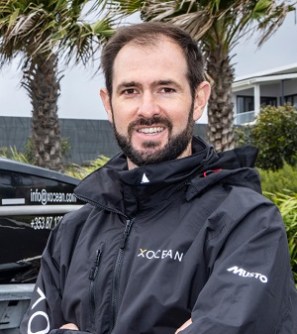
Laurie Smith, Australia-based USV Pilot
What is your background?
I have 10 years’ experience in the maritime sector, moving from port operations into merchant shipping as a deck officer trading internationally on a variety of vessel types.
How did you find out about the job?
I found out about XOCEAN whilst completing a Dynamic Positioning course in Perth. The instructor had sailed in the past with an XOCEAN employee and was aware of potential job openings as the company was expanding into Australia.
Was there a big learning curve?
There was an adjustment period, primarily for my family as they adapted to me being home permanently instead of constantly coming and going. However, once we adjusted, it turned out to be a better fit for all of us.
Have there been any challenges?
Learning many new programs and methods for working online, but this is expected when taking on any new role.
How is the work/life balance?
Great! I feel I have achieved a healthy balance between work and spending quality time with my family and community.
In which part(s) of the world do you operate?
So far, I have been remotely operating vessels in the North Sea and Celtic Sea.
What do you enjoy about the job?
What I like about the role is that it doesn’t require any travel for day-to-day operations, so once I hand over a shift, I’m immediately available. Working for the company has been very rewarding, and I’ve enjoyed the opportunity to develop new skills and communication techniques. Even though the work is remote, I find the team to be very warm and welcoming, always willing to share their knowledge and provide training.


